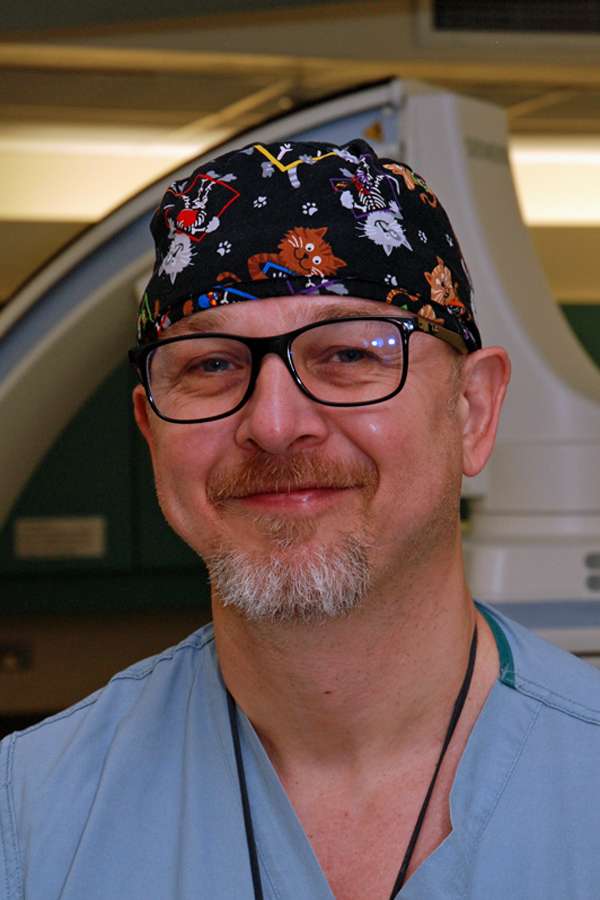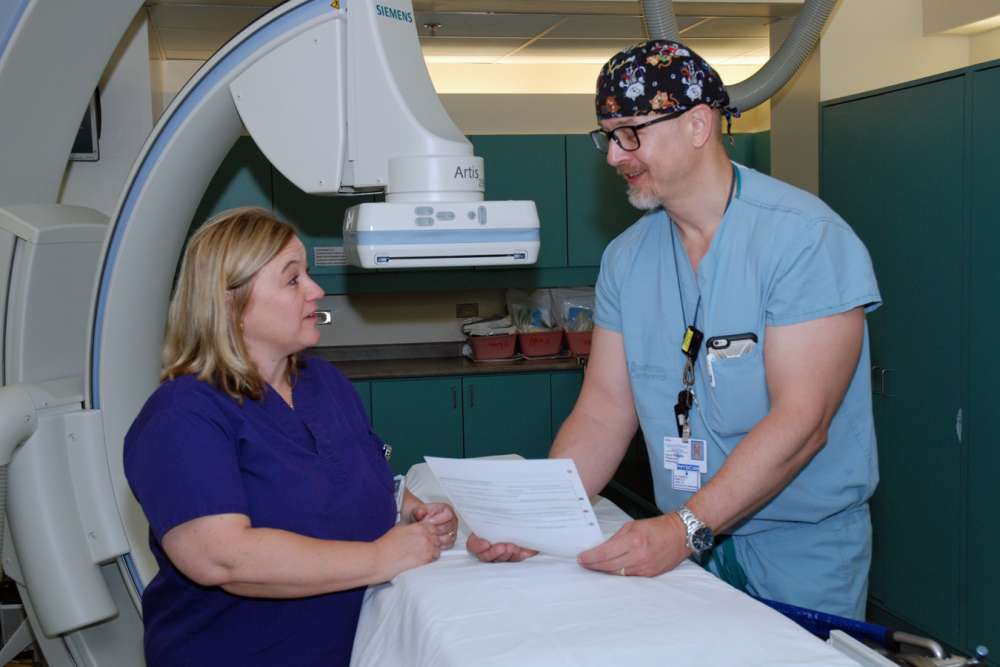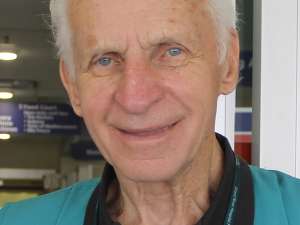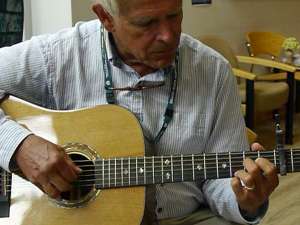
Dr. Darren Knibutat is excited to provide care in a rapidly-evolving field at Waterloo Regional Health Network.
Dr. Knibutat is an interventional radiologist. He provides care that combines medical imaging with minimally-invasive procedures. He brings years of clinical practice to support advanced patient care needs at WRHN.
Although he has fabulous technology at his disposal to provide care, Dr. Knibutat realizes each patient is different. He enjoys the people side of his role as he works to understand each person’s unique needs.
He’s privileged to be part of the care team at WRHN, and is very interested in the on-going development of interventional radiology to support cancer treatment.
----
Why did you choose medicine in general?
I was always fascinated with science and biology as a child. I started my professional career as a veterinarian, graduating in 1990 from the Ontario Veterinary College. After practicing full time for 11 years, for a variety of reasons, not the least of which was my desire to help people, I decided to return to school and completed my interventional radiology fellowship in 2011, the same year I arrived at WRHN.
How did you become interested in interventional radiology?
Veterinarians are exposed to all facets of medical practice and I gravitated to both radiology and procedures/surgery. Interventional radiology is a perfect blend of using image guidance with minimally-invasive techniques to treat patients.

How did you come to practice at WRHN?
I am friends with our former chief of staff, Dr. Ashok Sharma, who encouraged me to return to Canada from the USA to practice at WRHN.
It must be intimidating for patients seeing all of that technology around them as they’re about to undergo a procedure. How do you make it easier for them?
One of the benefits of being in clinical practice for 27 years, both as a veterinarian and as a physician, is understanding that people have different needs with respect to their healthcare information. Some want high levels of detail and minute-by-minute explanations; whereas others would rather talk about the weather or anything other than their procedure.
In general, most patients are apprehensive of the unknown. Taking time to explain to them what the procedure is, what we expect will happen and reassuring them that anxiety is entirely normal, goes a long way in helping them overcome their concerns.
How has IR practice changed through your career? How do you continue to see it changing?
Interventional radiology is on the cutting edge of both imaging and minimally-invasive technologies. It is an exceptionally dynamic field with new approaches to treat a wide range of diseases constantly being developed and researched.
Some of the more exciting areas are in interventional oncology, a relatively new designation over the past four to five years. Minimally-invasive techniques are being added to the possible treatment options for cancer patients.
What do you like about your role at the hospital?
The people that I work are a dedicated team of professionals and it is a genuine pleasure to work alongside them. The vast majority of our patients are going through a difficult time in their lives. We work hard to make sure their lives are better after we have treated them, which gives me a true sense of satisfaction and well-being.


 John Goertzen: bringing a lifetime of volunteering to GRH's emergency department
John Goertzen: bringing a lifetime of volunteering to GRH's emergency department Asher and Elijah: getting a healthy start through GRH's neonatal ICU
Asher and Elijah: getting a healthy start through GRH's neonatal ICU Doug Jones- using his musical gifts to comfort GRH patients
Doug Jones- using his musical gifts to comfort GRH patients